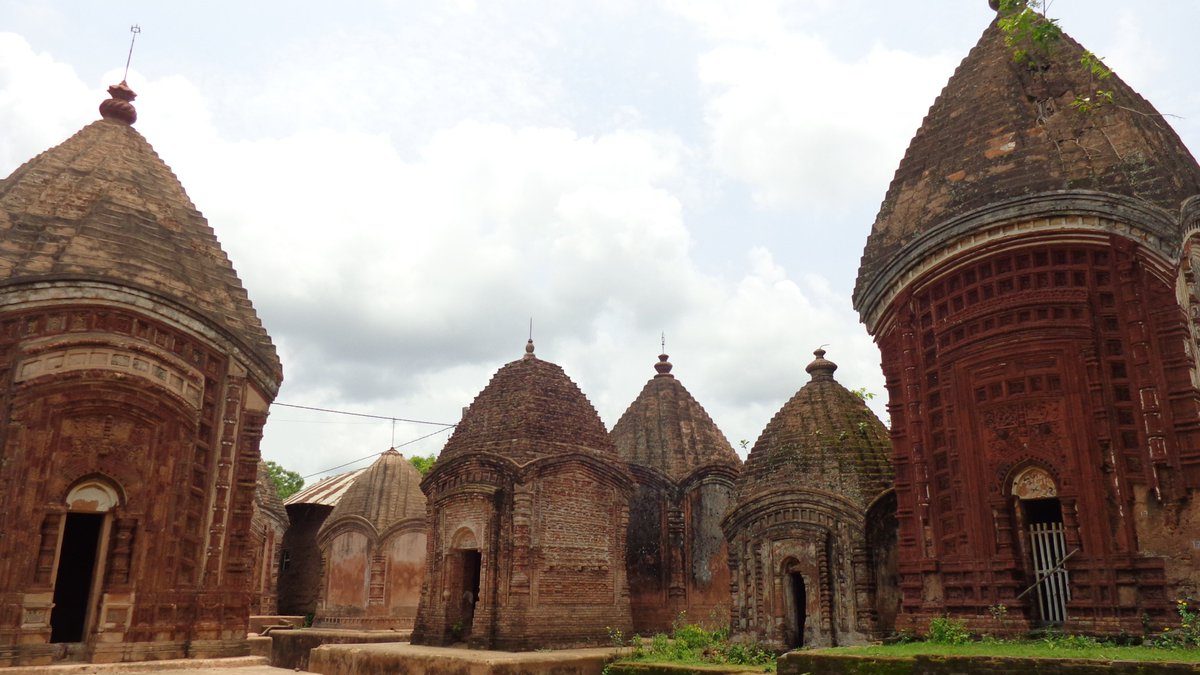Maluti is a small village in Jharkhand with over 70 magnificent terracotta temples dating from the 17th century. They are now being recovered. Maluti is a village deep in Jharkhand’s hinterland. Narrow lanes flanked by mud houses and a few concrete structures lead to several open spaces right in the heart of the village — areas that call attention to over three decades of affluent architectural styles.
The village, which formerly contained 108 temples, has become a weak shell of its former self, with just 72 temples surviving — however, the total quantity puts Maluti on the map of India’s heritage. Maluti’s terracotta temples are all being repaired, with sophisticated terracotta engravings of mythological images on their outer walls and walls that have lasted ever since the early 17th century despite the inclement climate and the passing of time.
Maluti Temples not only have a distinct temple style but are also made of terracotta. The Maluti Terracotta temples are small but beautiful. Carvings depicting Hindu mythologies such as the Ramayana and Mahabharata can be found in each temple. Apart from Mowlakshi, there are shrines dedicated to Lord Shiva, Vishnu, Durga, Kali, as well as other divinities.
They bear no resemblance to any well-known temple architectural styles. The Maluti Temples are a fusion of various styles of local architecture. The artisans were from the Bengal region, and they added a new twist to the design. As a result, Maluti Temples are among the most beautiful temples in Jharkhand.
The village, situated in the Dumka district, is near the West Bengal frontier, and Maluti’s temples are distinguished by Chala architectural style, which was influenced by traditional Bengali shacks with their sloping roofs with rounded corners. The exquisite Keshta Raya terracotta temple at Bishnupur in Bengal’s Bankura district can also be seen in every temple. The 17th-century masonry technique of moulded bricks has been extensively used.
But why are there so many temples in Maluti, an otherwise unremarkable village? The zamindar family’s women’s ego clash appears to be the reason for the construction of so many temples in such a small village. According to oral history, they would be offended if they had to visit a temple built by the husband of another woman. The majority of these temples are dedicated to women, implying that temple construction had become a symbol of status.
The temples are thought to have begun construction in the early 17th century. They began to crumble over time due to a lack of maintenance, and many of them have been overrun by vegetation. Over the years, several terracotta panels have been stolen. The Bihar government repaired the temples in 1985-86, but there has been no ongoing maintenance because there are no trained locals to handle conservation regularly.
Years back, retired schoolteacher Gopaldas Mukherjee wrote a detailed research paper on how to protect this valuable heritage, but it wasn’t until Jharkhand’s tableau based on the temples won a prize in the Republic Day parade in 2015 that the national spotlight fell on Maluti. Prime Minister Narendra Modi is said to have taken a personal interest in the restoration work as a result.


